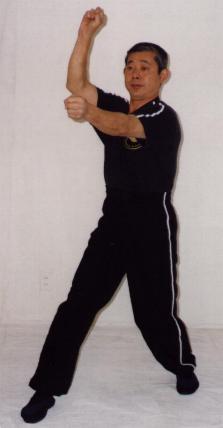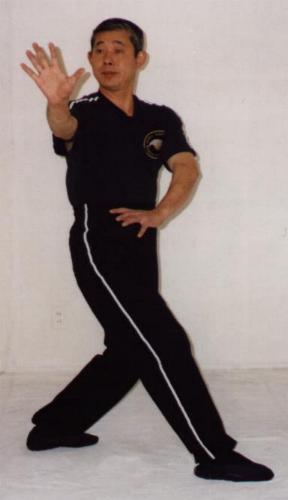Curriculum
Principles
Su Dong-Chen
Stages
Clubs
Equipement


Curriculum Principles Su Dong-Chen Stages Clubs Equipement |


|
 Su Dong-Chen (So To-Sei in Japanese) was born in 1953 in Taipei (Taiwan). His father was Taiwanese and his mother Japanese. He started practising Martial Arts very young.
In 1968, he entered the Martial Arts academy Tang Shou Tao, "Tang’s hands way", headed by the very famous Master Hung Y-Hsiang (refer to BBC movie written and produced by Michael Croucher, or to The Great Taiwan Guide, ed. Gallimard, 1993). In this Academy the course at instruction consisted at Shaolin Chuan, Hsing Y Chuan, Pakua Chuan and Tai Chi Chuan.
There he had the unusual opportunity to participate in the course for foreigners composed of American soldiers and a group of Green Berets. It was a daily training from 6 PM to 10 PM and sometimes till morning. Those lessons were based on fighting. Beginning were hard but soon young Dong-Chen developed great abilities.
In 1969, aged 16 years, despite being young and thanks to a dispensation, he participated to Taipei Martial Arts tournament. The other fighters were adults and some had a national ranking. Contrary to expectations, Su Dong-Chen finished in the second place.
The following year, at 17 years, he finished in the first place. In 1971, he finished second at the Taiwan Chinese Martial Arts tournament and in 1973, he finally finished first at this same tournament where Hong Kong and South East Asia also participate.
In 1973 he went to Japan where he compared himself with several experts in different Martial Arts. This led him to rethink some practices of traditional Kung Fu and thus create his own School.
Su Dong-Chen (So To-Sei in Japanese) was born in 1953 in Taipei (Taiwan). His father was Taiwanese and his mother Japanese. He started practising Martial Arts very young.
In 1968, he entered the Martial Arts academy Tang Shou Tao, "Tang’s hands way", headed by the very famous Master Hung Y-Hsiang (refer to BBC movie written and produced by Michael Croucher, or to The Great Taiwan Guide, ed. Gallimard, 1993). In this Academy the course at instruction consisted at Shaolin Chuan, Hsing Y Chuan, Pakua Chuan and Tai Chi Chuan.
There he had the unusual opportunity to participate in the course for foreigners composed of American soldiers and a group of Green Berets. It was a daily training from 6 PM to 10 PM and sometimes till morning. Those lessons were based on fighting. Beginning were hard but soon young Dong-Chen developed great abilities.
In 1969, aged 16 years, despite being young and thanks to a dispensation, he participated to Taipei Martial Arts tournament. The other fighters were adults and some had a national ranking. Contrary to expectations, Su Dong-Chen finished in the second place.
The following year, at 17 years, he finished in the first place. In 1971, he finished second at the Taiwan Chinese Martial Arts tournament and in 1973, he finally finished first at this same tournament where Hong Kong and South East Asia also participate.
In 1973 he went to Japan where he compared himself with several experts in different Martial Arts. This led him to rethink some practices of traditional Kung Fu and thus create his own School.